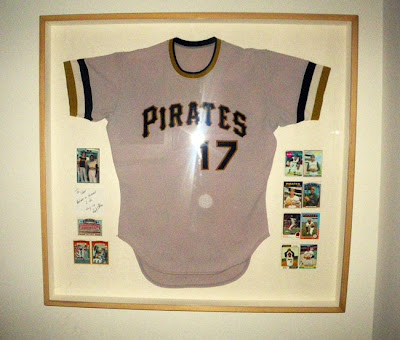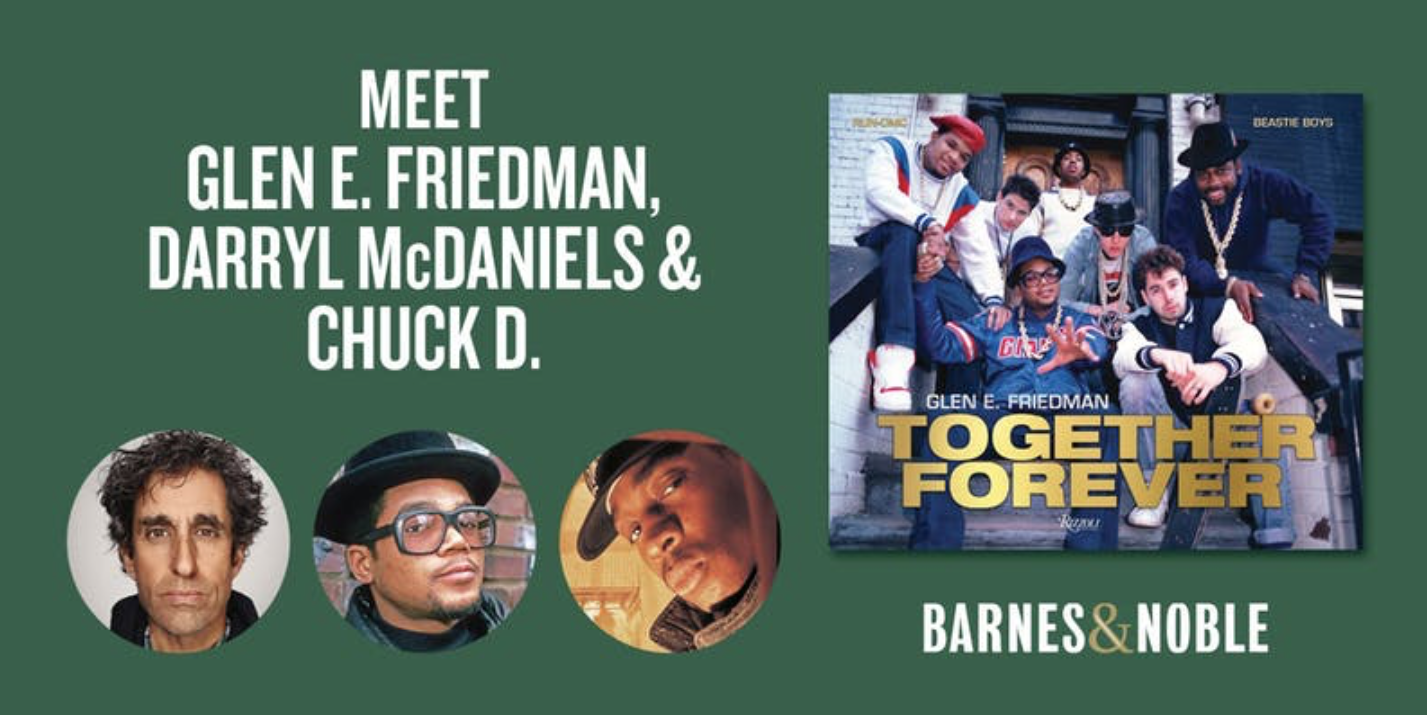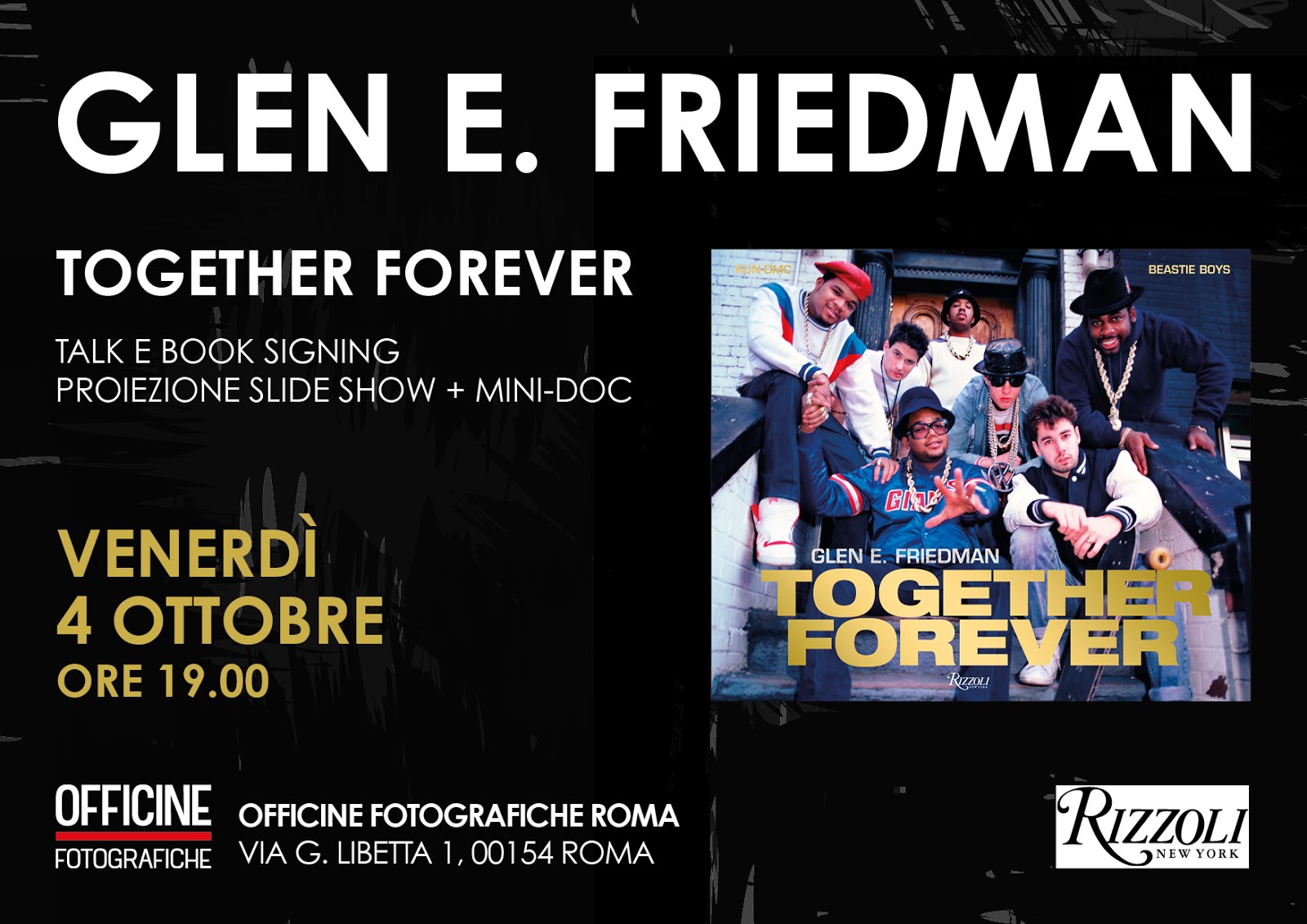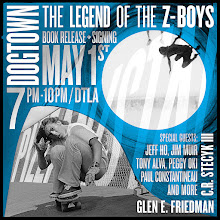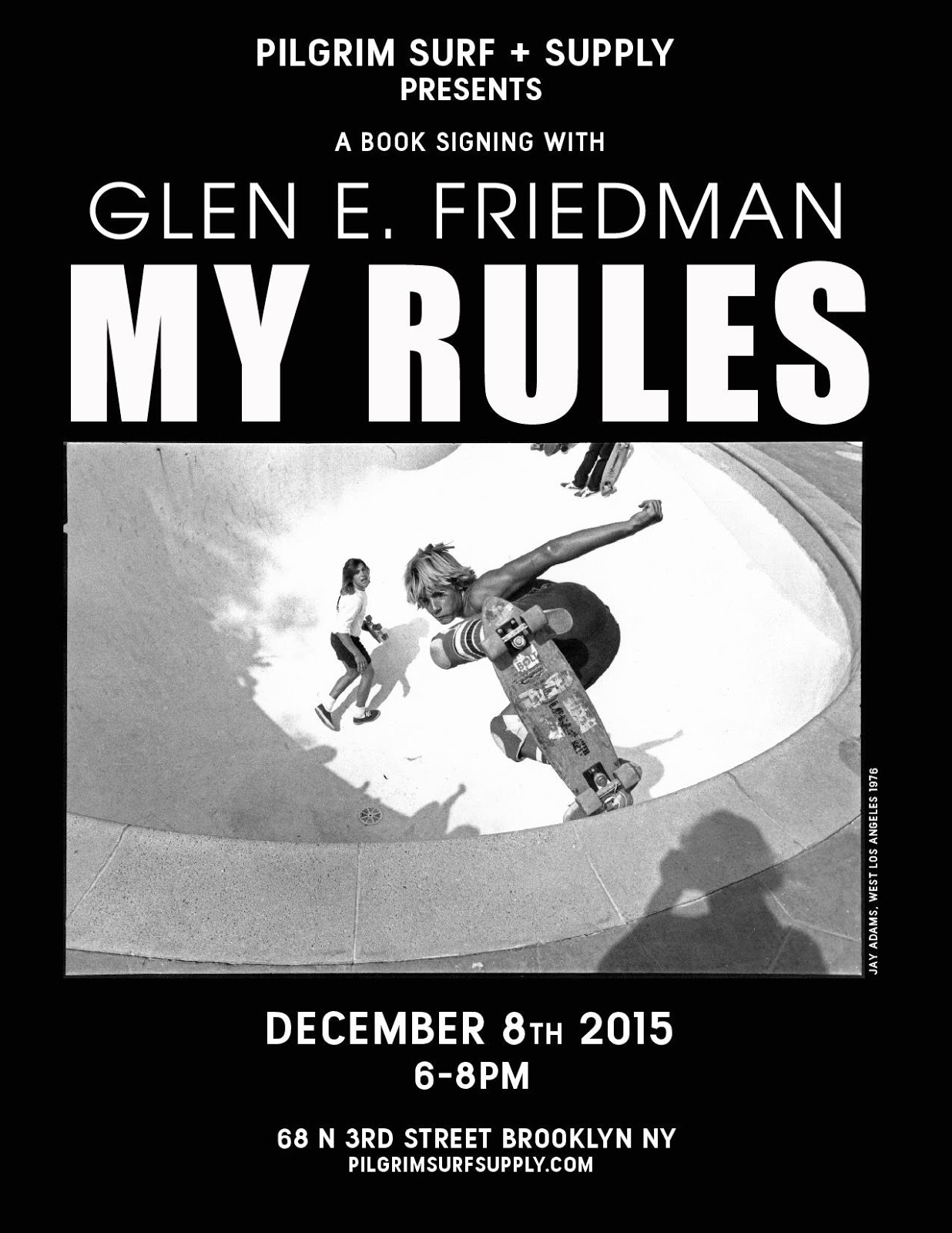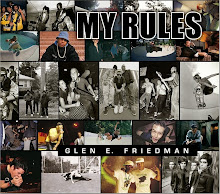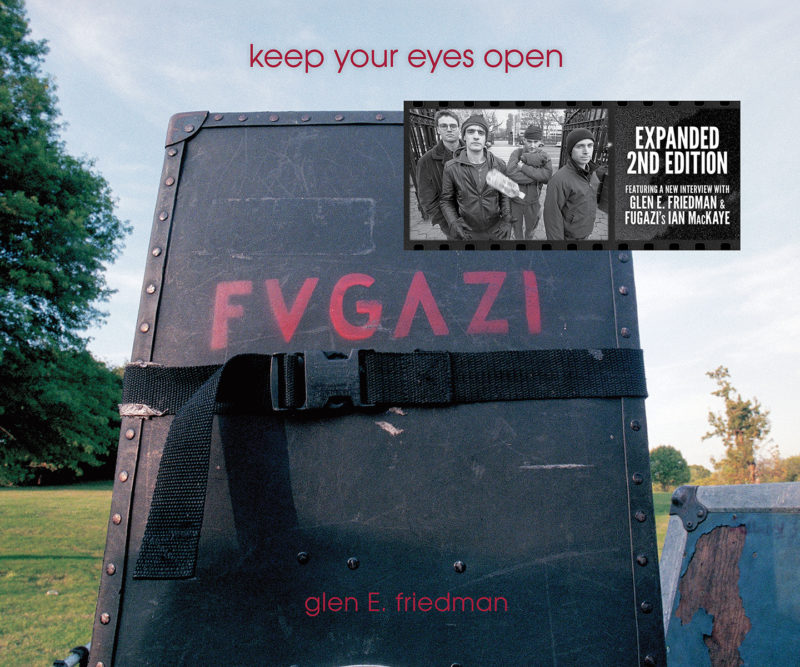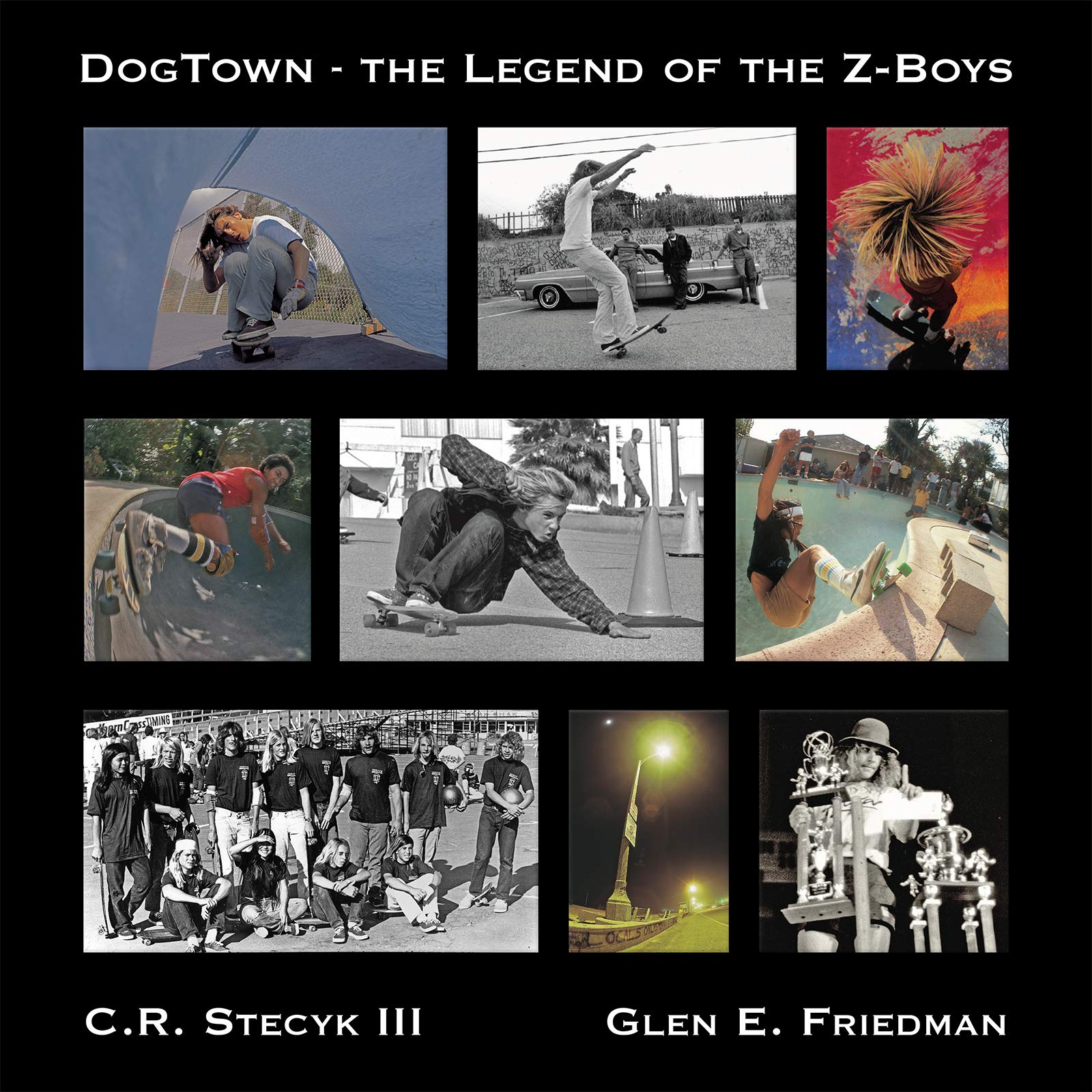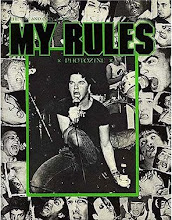Tuesday, July 31, 2012
Monday, July 30, 2012
Sunday, July 29, 2012
Saturday, July 28, 2012
Views from the International Space Station
Every frame in this video is a photograph taken from the International Space Station. All credit goes to the crews on board the ISS.
I removed noise and edited some shots in photoshop. Compiled and arranged in Sony Vegas.
Music by John Murphy - Sunshine (Adagio In D Minor)
itunes.apple.com/us/album/sunshine-music-from-motion/id297702863
Image Courtesy of the Image Science & Analysis Laboratory,
NASA Johnson Space Center, The Gateway to Astronaut Photography of Earth
eol.jsc.nasa.gov
thanks, presurfer
Friday, July 27, 2012
Staying Dry In The Rain: Should You Run Or Walk?

Staying dry in rain: run or walk?
By Jason Palmer
Science and technology reporter, BBC News
A physicist has put forth new ideas in the long-running question of how best to keep dry when moving in the rain.
If you run, you are out in the rain for less time, yet you run into more drops - so what is the optimal speed?
Franco Bocci, reporting in the European Journal of Physics, now asserts that both wind direction and a person's stature figure into the answer.
In most cases, the general answer is to run as fast as possible; but the answer changes in a tailwind, or for the thin.
Prof Bocci is by no means the first person to address the problem, which is far more mathematically complex than it seems on the surface.
In the 1970s, a number of papers came out in mathematics magazines debating the question, each more fully exploring the issues at hand.
The battleground for this bit of hobby mathematics now seems to be the UK's Institute of Physics publication the European Journal of Physics.
In 1987, another Italian researcher asserted in the journal that changing strategies did not make a substantial difference.
In 2011, a textile expert and a physicist used the same publication to suggest that an optimal speed existed, depending on the wind direction.
"For the most part in the previous work, there was a simple answer, but I found that the problem is much more complicated," Prof Bocci told BBC News.
What complicates the question is the human shape; for simplicity, previous attempts to crack the thorny problem assumed people to be thin sheets or upright, rectangular boxes.
When Prof Bocci considered a more general case - likely to be the case you would face in the rain - he found that the answer may depend on an individual's height-to-breadth ratio as well as wind direction and raindrop size.
Luckily there are a few generalisations in the analysis, to spare you having to calculate the cosine of the angle between your path and the wind direction.
"Let's say that in general, the best thing is to run, as fast as you can - not always, but in general," said Prof Bocci.
"If you're really thin, it's more probable that there will be an optimal speed. Otherwise, it's better to run fast."
As for wind direction - and again, in general - you should run as fast as you can unless the wind is behind you, in which case the optimal speed will be exactly the speed of the wind.
Prof Bocci said that the problem promises to get even more complicated as more factors are taken into account, but that for now he is drying his hands of the question.
Thursday, July 26, 2012
There's No Hiding It: Citizens United Wasn't About "Speech" -- It Was About Takeover of American Democracy
In all the hullabaloo over the Supreme Court’s decision on health care, another of its rulings quickly fell off the public radar. Before deciding the fate of the Affordable Care Act, the Court announced it would not reconsider Citizens United, the odious 5-4 decision two years ago that opened our elections to unlimited contributions.
Within minutes of that announcement, right-wing partisans were crowing about the advantage they now own, an advantage not due to ideas or personalities but to the sheer force of money. They were remarkably candid and specific.
Here’s what Fred Barnes wrote in The Weekly Standard about the Senate race in Missouri:
For three weeks in May, Republican super-PACs took turns attacking Democratic senator Claire McCaskill in TV ads. Republicans hadn’t held their primary — it’s not until August 7 — but McCaskill wound up trailing all three of the GOP candidates in polls. Now McCaskill, unnerved, is struggling to recover… That’s what super-PACs can do. When they emerged in 2010 and worked in tandem, they were a critical force in the Republican landslide in the congressional elections. This year they’re playing an even bigger role. The size and reach of their efforts dwarf what they did two years ago.
Attaboy, Fred, for telling it like it is, for exposing the hoax that the Court’s original decision was about “free” speech. No, it’s about carpet bombing elections with all the tonnage your rich paymasters want to buy.
Try not to laugh when you hear one of its perpetrators, the noted lawyer Floyd Abrams, say,as he did not too long ago:Speech already is rationed. On your playing field, Messieurs Barnes and Abrams, those who have no money have no speech. And just who do you think is doing this “speaking?” Poor people haven’t lost their voice — they can’t afford a voice. Everyday working people suffer from universal laryngitis, brought on by the absence of money. As for children — children who have a big stake in our elections but no vote, forget it — for them to be heard they would need piggy banks the size of Walmart heirs. Or the Koch brothers for uncles.
“I don’t think we should want as a matter of policy, to make decisions which are essentially, people can’t do all the speaking that they can in a political campaign. I don’t think we can ration speech.”
And if it’s free speech the Deep Pockets are practicing and touting, why are you ashamed of it? If free speech is a right, why all the secrecy? Why hide from voters where the money is coming from? Why not openly say you are downright proud to be exercising their First Amendment rights and writing checks is your patriotic duty?
Instead, conservatives across the country are fighting legal battles to keep their sugar daddies secret. Why? According to their guardian angel in Congress — the highly leveraged Senate Minority Leader Mitch McConnell — the right wing opposes disclosure laws because the super-rich just might be bullied and harassed by the rest of us who want to know who’s buying our elections.
So the editorial page of the Wall Street Journal asks us to have pity on billionaires and those little ol’ corporations and their CEOs who just might have their tender feelings hurt; exposed to boycotts and pickets if it was known which candidates they were buying.
But wait a minute. Weren’t we taught the First Amendment also guarantees the right of every citizen to assemble and petition, even to boycott and picket?
That’s what a couple of hundred protesters were doing just the other day. They marched to the D.C. offices of American Crossroads and Crossroads GPS, those right wing money mills run by the mastermind of so much of this massive fundraising, Karl Rove. He’s making a bundle buying and selling “Free Speech,” while at the same time deploring the disclosure of big donors’ names as “shameful” intimidation!
Exercising their First Amendment rights, the demonstrators taped a kind of wanted poster on Rove’s office door, indicating they would like to see him wearing an orange prison jumpsuit. Instead, he could be seen in casual wear, buzzing around in a golf cart at Mitt Romney’s Utah mountain gathering of high rollers. No doubt plotting how to raise more millions to pay for more “free speech.”
So let’s see if we’ve got this right: On the one hand, conservatives declare that corporations and the super-rich can spend all they want on exercising their First Amendment rights, but on the other, they demand to keep it secret so the rest of us can’t exercise our First Amendment rights to fight back. Have you ever heard of more cowardly lions?
It’s one big joke. Big enough to make you cry. Three things don’t go together: Money. Secrecy. Democracy. That’s the nub of the matter. This is all a sham for invalidating democracy in the name of democracy. It’s the trick authoritarians always use to hide their real intentions, which in this case is absolute power over our public life and institutions: the privatization of everything.
The Supreme Court is pointing the way. Instead of mitigating the worst excesses of both the state and the private sector, with Citizens United and the latest decision affirming it, the Court has taken sides — saying to the massed wealth of the one percent: America is yours for the taking, for the buying. Help yourself.
That’s what George II thought, too, which brings us back to our celebration of the 4th of July, to the Declaration of Independence and Thomas Jefferson, who seems to have thought that a little uprising now and then would be good for what ails us. This time the overweening power is not monarchy but plutocracy, the convergence of the political, religious and corporate right that would keep us in the dark about where all that money is coming from, and who it’s buying, until one day we wake up and our country is no longer our own.
Fortunately, those orange jump suits come in one size fits all. So remember, moneyed lords and ladies, what King George learned the hard way — you can only push your subjects so far.
Veteran journalist Bill Moyers is the host of “Moyers & Company,” airing weekly on public television. Check your local listings. More at www.billmoyers.com
Wednesday, July 25, 2012
The History of DEVO
As Told By the Brilliant Jerry Casale

from DangerousMinds
This is raw video of an interview from the early ‘90s with Devo co-founder Jerry Casale that was intended to be used in a documentary on the band that was, as far as I know, never completed. But the footage as it is still serves as a wonderful history of Devo and an entry into the brilliant mind of Casale.
The fact that you can’t hear the questions being asked of Casale doesn’t diminish the interview in the least. It’s full of fascinating insights and anecdotes detailing the genesis, rise and continued success of one of rock ‘n’ roll’s truly visionary bands. Casale delivers all of this with wit and sharply observed truths about the art and business of pop music.
Spud-boy Casale is one very intelligent potato and this video should be mandatory viewing in high school art classes (if they still exist).
Unfortunately, there’s about six minutes missing from the interview that contains some musical content that was disallowed by Youtube for licensing reasons. If that situation changes, I will update this article.
Tuesday, July 24, 2012
Monday, July 23, 2012
Raise Every Voice

The phone system doesn't allow us to hear people at a distance in the same way they quite literally sound to us when up close. Alexander Graham Bell's accidental dehumanization has been redeemed in part by a technologically related godchild. And it only took about 150 years. Bell helped teach the deaf to speak aloud, and had a passionate interest in the reproduction and transmission of spoken words. Yet he ushered in a long era in which POTS (Plain Old Telephone Service) provided a scratchy, low-fidelity, cold rendition of how we sound. Mobile phones didn't do much better. Using early encoding techniques designed for slow mobile processors, cell phones were often far worse than POTS in carrying the nuance of our speech.By Glenn Fleishman
While today's public switched telephone network (PSTN) is digital at its core, the last bit (known as the final mile) between phone exchanges and homes or businesses is analog, just like it was in early phone networks. We speak into a modern phone that almost certainly no longer uses the compression properties of carbon granules to create directly the electrical signal that goes over the wire, but nonetheless uses a digital facsimile of same. (Business may use digital exchanges, but the outcome is fed into the same digital meatgrinder as analog voice connections.)
The analog system uses filters to capture a range of sound from about 300 hertz (Hz) to 3300 Hz. The lower number, measured in cycles per second, represents deeper sounds (a slower cycling) and the higher, high-pitched ones. Most of the primary sound and amplitude of human speech is at the lower end of that spectrum, whether the voice is male or female. (Wherever analog voice terminates in the PSTN at a digital gateway, it's converted into a standard form that's the equivalent of about 12 to 13 bits per sample at 8,000 samples per second. Modern cell phones capture approximately the same frequencies and digital sampling rates. Sprint may have trumpeted the "pin drop" in ads in the mid-1980s, noting the lack of noise in its fiber-connected network, but it didn't improve the frequency range.)
You have to look to the harmonics of a voice to understand why the cut off at the lower and upper ends make it both difficult to understand what people say over a phone, and why they don't sound really present to you. Harmonics are an artifact of vibrations; almost anything that oscillates has harmonics. Take a piece of string, stretch it, and thrum it, and you might even see the fundamental frequency, the main or base oscillation on which most of the energy is present. But the overall vibration carries with it multiples of that fundamental one. We hear a single sound composed of all the overlaid harmonics at once, although we can train our ear to pick among them. (Encyclopedia Britannica provides a nice explanation.)
With speech, the fundamental frequency can be centered below 300 Hz, while overtones can reach over 10 kHz. Harmonics from normal speech are quieter (and physiologically sound quieter to us) the higher they go. Trained singers can control some of their overtones, while harmony singers can produce marvelous new sounds at higher pitches from the intersection of harmonics. Polyphonic singers, like Tuvan throat singers, can module fundamental tones and harmonics simultaneously. (You can find a marvelously clear explanation with illustrations of frequency limits in voice communications from a 2006 white paper of a firm that was at the time promoting broader frequency support for VoIP in its products.)
The frequencies captured also define the dynamic range: not just which frequencies, but the difference in expressiveness by tone. In photography, dynamic range is the gradation of all the grays captured from lightest to darkest. The greater the dynamic range, and the more real (or even hyperreal, with high-dynamic range imaging) that pictures appear. Further, the gap between each step in capturing dynamic range (from one tone to the next adjacent one) defines how smooth the audio sounds. In a photo, it's the difference between images with gray banding and ones that appear to have a continuous tone. Beyond dynamic range lies the difference between louds and softs. Phone calls compress amplitude, missing the softest sounds and turning everything largely into a muddle in the middle.
This is why you when you listen to broadcast FM radio, even with any scratchiness that eats into the signal, you feel like you are physically co-located with the sound. FM radio doesn't have a sample frequency as such, because it's continuous and analog, but it has a frequency response of 30 Hz to 15 kHz, which covers most spoken, sung, and musical tones.
But here's the thing. If the PSTN is all digital in its core, why can't we just stick digital filters on both ends that let us capture a greater range of audible frequencies with greater accuracy and greater clarity? The PSTN allots 64 Kbps in its circuit-switched (dedicated capacity) approach to each voice call, but modern compression is much better. GSM cell networks use a standard that can stream at from about 5 Kbps to 12 Kbps.
An AAC file at nearly the same quality as an uncompressed audio CD recording can encode roughly 20 Hz to 22 kHz (to get the highs and lows of music) with 16-bit stereo samples to provide nice differentiation in that range at a rate of 44.1 kHz for clarity in about 128 Kbps. But that's for music. Spoken voice can be compressed even further, down to 48 to 96 Kbps, while maintaining excellent quality.
Given that a DSL line using the same two wires that carry analog voice can handle 24 Mbps and even more these days, what gives with voice? Possibly one day, we'll see the end of analog phones and analog lines when nearly everyone has Internet-based VoIP or a mobile phone, and the remaining holdouts (the stubborn, the elderly, and the poor, typically) are forced to attach adapters. (That's how the U.S. managed the digital television switchover.)
But for now, the PSTN is the PSTN and the Internet is the Internet, and the two kinds of switching networks don't meet except at gateways. VoIP-to-VoIP over the Internet provides a workaround. Even the earliest successful VoIP calls I can remember making between two computers sounded better to me than any traditional voice call. The problem was always latency (the time it takes for data to transit from one end to the other) and jitter (the consistent delivery in order of necessary packets). Latency is down, jitter reduced, and quality has improved dramatically since the late 1990s, as better compression techniques, more processing power, and the greater availability of bandwidth allows a richer representation of voice.
Skype wasn't the first system to allow end-to-end VoIP calls by a long shot, although it is surely the most popular at present. It has stepped through a few codecs (the algorithms that convert uncompressed digital representations of media into more compact ones and back again) since its 2003 introduction, and developed its own, SILK, in 2009. SILK captures 70 Hz to 12 kHz at sample rates that vary from 8 to 24 kHz and result in throughput of 6 to 40 Kbps. It varies depending on conditions, with the best results with the highest consistent available throughput.
I've done a fair amount of radio guesting in the last several years, and I remember that lovely feel the first time of putting on a set of headphones in the studio, talking into a nice mic, and hearing myself and the host sound as rich through my ears as when I listen to actual broadcasts and podcasts. When I started using Skype routinely around the same time, I had the same reaction: this has the warmth, fullness, and clarity of radio broadcasts. (In a bit of irony, I am often interviewed by radio shows from home via Skype. The program records both ends of the call on its side, and I use Audio Hijack Pro to record my end using a Blue Yeti mic. I send them my audio file, but they have theirs in case of a problem with my recording.)
Make a Skype call using earbuds or with a USB headset, close your eyes, and you find yourself transported next to the party you're calling. The sense of presence comes through. When I set up interviews for articles, I try to get the other party on Skype. A phone call, and too often a cell call, is scratchy and flat. You can't get to know someone in a short time with that flat of a call, as you sound dead and distant to the other party. Skype and other VoIP programs with good codecs bring you as close as you can come without being there.
My friends Lex Friedman (a Macworld magazine editor) and Marco Tabini (an open-source development advocate) recently released an iOS game called Let's Sing. When Lex told me about the game, I thought it a terrific idea, but couldn't articulate why, even after he let me help test it. The game is a bit like Draw Something but for singing, humming, or whistling a tune without using the lyrics to get a partner to guess the title.
After playing a number of rounds, I realized what Lex and Marco had hit upon, and why I'd soured on Draw Something (besides some game mechanic issues). Drawing can require time, deliberation, and skill, even for silly purposes, and I'm not great at drawing on an iPhone. Watching a drawing unfold in sped-up time can be tedious. There is a human connection there, watching someone's finger or stylus at work. But it never felt like a real bond.
What my friends hit upon is voice. They record at high-enough fidelity that every round for me is a beautiful connection with friends and family. I discovered Lex's wife, Lauren, has a lovely voice, and I already knew my pal Ren can belt a tune. That connection makes the game work: I like to hear the voices of people I know and love.
We've seen a rebirth via the Internet in the full expressive representation of the sounds we emit, and, I believe, made greater connections among each other as a result. Skype and other Internet telephony programs provide free computer-to-computer connections, and the free part absolutely certainly drove usage for a long time. (Skype is now a double-digit percentage of all international calls.)
But I'd argue that what drives me and others to Skype isn't just cost. I have effectively free long-distance calling for my purposes with my mobile phone, and services have long existed to let you dial around international long distance for cheap per-minute rates. Rather, I go to Skype to hear the way people sound, and have real conversations.
Bell gave up his work creating discrete multi-tone communications, leaving that for John Cioffi to make use of 100 years later (and win a Bell award), in order to crush the human voice. He didn't intend that, but it happened nonetheless. It's a bit of neat closure to see that Bell's initial interest, applied to data communications, has brought back the clarity of voice.
Sunday, July 22, 2012
English people speaking Politics
w/ John Lydon - Sunday Sermon
here is the entire Question Time show featuring John Lydon (among others) which went out on BBC1 last Thursday.
We all gathered round the computer monitor to watch this broadcast last week, and I have to admit it felt like real event television. Having someone with the wit and stature (not to mention televisual infamy) of John Lydon sitting as part of a panel on a mainstream political show simply does not happen very often.
It was a mixed blessing. I wasn’t the biggest fan of the pro-drug decriminalisation discussion, which Marc linked to before, and I thought he could have handled that part better. I also found some of his showboating grating, but hey, the guy is a rock legend, so I guess a bit of attention grabbing narcissism is to be expected.
But where Lydon really shone was in the opening few minutes of the show, when the panel were asked about the current banking crisis, and how the UK government intends to investigate the LIBOR scandal. Perfectly cutting through the blame-throwing merry-go-round the politicians were spinning in an attempt to avoid giving any real answers, Lydon was loud and direct, and did what he does best - namely, a physical representation of righteous fury. Below is the entire episode, but the beginning of Question Time is worth watching just to see Lydon put Louise Mensch and her ilk firmly in their place, by reminding them that this is not some abstract argument or phiopsphical discussion. People’s lives and livelihoods are at stake:
Saturday, July 21, 2012
ILL MIND of HOPSIN
HIp-HOP's Not Dead, Pt. 2
Oh did i mention he's also a skater?
I'm going to post his newest, incredible, video on top here, over a million plays in it's first 24 hours up.
And a few more of his clips both over 10 million views each, crazy . . .
An interview with him last. Pretty incredible stuff. Enjoy.
Friday, July 20, 2012
Sculptures create shadow faces

NYC artist Kumi Yamashita, whose thread/nail portraits [Boing Boing] posted about previously, also creates head-spinning artworks from carefully-placed objects, a single light source, and shadows. "Light & Shadow"

Thursday, July 19, 2012
Wednesday, July 18, 2012
Why is 98.6 just right for your body but too hot for the weather?
Slate has a nice explainer covering heat wave health problems. The central question: If my body temperature is 98.6 degrees Fahrenheit, why am I uncomfortable when it's 98.6 degrees Fahrenheit outdoors?
The answer is both basic and interesting. Sure, 98.6 degrees F is the healthy temperature for a human body, but that's only because we are pretty good at transferring heat away from ourselves. Your metabolism and your muscles generate more heat than that, but you get rid of it using tricks like breathing out hot air and sweating. Basically, your body works like a heat exchanger. It's the same sort of system that keeps your refrigerator cool—take the heat from inside a closed space and dump it into the surrounding environment.
Unfortunately, this system works best when the surrounding environment is cooler than the closed space. Your body is happiest when the air temperature is around 70 degrees F. That's when it's most efficient at getting rid of your excess heat. When the weather gets to warm, it's a lot hard to make the heat exchange. With nowhere else to put the heat, your body temperature starts rising.Because exercise causes the body to generate so much extra heat, optimal temperatures for intense physical activity are lower than those for daily life. Athletes can raise their core temperatures six degrees just by working out. Add an environment that makes heat dispersal more difficult—not to mention possible dehydration from sweat losses that sometimes exceed six liters (for marathoners) or two liters per hour (team game players)—and performance can take a nosedive.Read the rest of Slate's Explainer on body temperature.
... For example, researchers in Darwin, Australia, observing a long-distance runner taking a 30-minute jog through the humid air, noted that his body temperature increased from 98.96 degrees to 105.8 degrees. When he’d gone on a similar jaunt under cooler conditions, his temperature had risen by just two degrees. Such a spike spells trouble for maintaining an optimal heart rate: The man’s soared to 200 beats per minute during the last 15 minutes of his run, where, previously, it was a more sustainable 154 beats per minute.
Tuesday, July 17, 2012
How Henry Rollins gave up scooping ice-cream to be a full-time punk
Henry Rollins makes an appearance in the Big Think video series, explaining how he came to quit his job at the Haagen Dasz to sing for Black Flag:thanks, BoingBoingThat was 30 years ago. The years Rollins spent in Black Flag launched his career as a musician, writer, and performer. He seized the opportunity, ran with it, and numerous albums, books, films and tv shows later, he's still running. Rollins says of the Black Flag audition that he "won the lottery." Ok, the timing was lucky. But it was Rollins' energy as part of the DC punk scene (while working those day jobs) that earned him Black Flag's friendship, which got him the guest-spot, which got him the audition. And a less humble, hardworking guy might very well have burned out after a year on tour and ended up at rehab, then back at Haagen Dazs.Henry Rollins: The One Decision That Changed My Life Forever
Instead, Rollins took calculated risk and decisive action at the right moment, then committed fully to making the most of the life he'd chosen for himself. And instead of resting on his laurels, he's continued to learn, grow, and reinvent himself. That's what makes him heroic. What Kahneman's studies don't tell us is which of those once-aspiring actors worked tirelessly to create, then seize opportunity, nor how many of those failed entrepreneurs picked themselves up and went on to succeed in other bold ventures.
Monday, July 16, 2012
Stories from the world's first sex survey

This woman, Clelia Duel Mosher, conducted the world's first sex survey—a series of interviews with 45 American women, most of whom were born before 1870. She conducted the surveys off and on between 1892 and 1920, but never published on them. They were found in 1973, and present an interesting take on Victorian and Edwardian-era women's sex lives, something we usually only hear about from decidedly biased sources from that time period that often claim women didn't like sex at all.
The surveys show that wasn't the case. More interestingly, they tell the story of changing expectations about marriage and sex.
Slightly more than half of these educated women claimed to have known nothing of sex prior to marriage; the better informed said they'd gotten their information from books, talks with older women and natural observations like "watching farm animals." Yet no matter how sheltered they'd initially been, these women had—and enjoyed—sex. Of the 45 women, 35 said they desired sex; 34 said they had experienced orgasms; 24 felt that pleasure for both sexes was a reason for intercourse; and about three-quarters of them engaged in it at least once a week.
Unlike Mosher's other work, the survey is more qualitative than quantitative, featuring open-ended questions probing feelings and experiences. "She's actually asking these questions not about physiology or mechanics—she's really asking about sexual subjectivity and the meaning of sex to women," Freedman says. Their responses were often mixed. Some enjoyed sex but worried that they shouldn't. One slept apart from her husband "to avoid temptation of too frequent intercourse." Some didn't enjoy sex but faulted their partner. Mosher writes: [She] "Thinks men have not been properly trained."
Their responses reflected the cultural shifts of the late 19th century, as marriage became viewed as a romantic union, not just an economic one, and as people began to dissociate sex from procreation, says Freedman. One woman, born in 1867, wrote that before marriage she believed sex to be only for reproduction, but later changed her mind: "In my experience the habitual bodily expression of love has a deep psychological effect in making possible complete mental sympathy & perfecting the spiritual union that must be the lasting 'marriage' after the passion of love has passed away with the years."
Read more about the survey and Clelia Mosher in the Standford Alumni Magazine.
Sunday, July 15, 2012
Nobel laureate occasionally hangs out on street corners, answering physics questions
from BoingBoing:
This morning, I got to spend a little time chatting with Daniel Bowring, a physicist who designs particle accelerators for Lawrence Berkeley National Laboratory. During our conversation, Daniel told me about something really cool. On at least two separate occasions, once in New York City and once in Chicago, Nobel Prize-winning physicist Leon Lederman has basically just set a card table up on a street corner and allowed all comers to bring him their physics questions.
I was imagining something like "Particle Physics Advice: 5 cents", which is a little off. But not by much. In the video above, you can see him in New York, hanging out in front of a wipe board that says "ASK A NOBEL PRIZE-WINNING PHYSICIST!" (Another sign to Lederman's left just has a picture of a model of the atom and an arrow pointing at him.)
It's pretty damn wonderful. And Lederman is great at quickly making physics concepts understandable. Enjoy! (And keep your eyes peeled. I really hope he does this again sometime.)
Saturday, July 14, 2012
Joey BADA$$
Hip-Hop Will Never Die!
HOT & New to Me, Dig it!
and who makes videos like this anymore? DOPE.
feelin' this track too
I really appreciate that some one is still making Hip-Hop like this.
Thanks, Faith Newman
Friday, July 13, 2012
'Send Bankers to Jail'
Following Barclays' Scandal, Stiglitz says 'Send Bankers to Jail'
Without threat of prosecution, says Nobel economist, expect little to change
Nobel Prize winner and former World Bank economist Joseph Stiglitz has called recent revelations that Barclays and other large banks colluded to defraud their costumers by artificially leveraging international interest rates a "textbook illustration" of how banks use privileged information and lax oversight to reap rewards for themselves while savaging the wider societies in which they operate.
In an interview with The Independent on Monday, Stiglitz argued (with Barclay's as just the most recent example) that bankers -- without threat of prosecution or jail time -- would continue to use their elevated status to exploit weak regulations, consolidate power, and avoid accountability.
The scandal at Barclays claimed the resignation on Sunday of Chairman Marcus Agius after traders at the bank admitted manipulating Libor, a baseline interest rate used by banks to set lending costs around the world and which acts as the benchmark, according to an estimate by Reuters, on $350 trillion in derivatives and other financial products.
Stiglitz argues, in paraphrase by interviewer Ben Chu, "that breaking the economic and political power that has been amassed by the financial sector in recent decades, especially in the US and the UK, is essential if we are to build a more just and prosperous society. The first step, he says, is sending some bankers to jail."
The banks, said Stiglitz in the interview, "create the non-transparent market" by dominating the legislative process that is suppose to control it. "For every meeting that the government has with [bankers], it [should] have to have a meeting with the labor groups and the representatives of civil society," he said. "The problem today is that there’s not equality of access."
And it's not just the banks, Stiglitz says. "Everybody knew that there was this scope for Libor manipulation. Many economists couldn’t believe that it wasn’t going on. We’re focusing on the bankers but at the micro economic level this goes on all the time. I was party to a suit in the state of Alaska. Oil companies were supposed to pay the state royalties – 60 per cent of the net price, the price of oil net of their transportation costs. They manipulated the transportation costs. They had to pay the state of Alaska $1bn. Stealing a penny a time. For every gallon, they stole a penny, or a fraction of a penny. This is in the nature Adam Smith’s invisible hand when there is a lack of transparency."
In a related analysis, Naked Capitalism's Yves Smith, wonders why the Barclays' Libor scandal caused such justifiable outrage in the UK, but generated barely a murmor in the US. And separately, Reuters tracks developments in the Barclays' case as embattled CEO Bob Diamond fends off criticism after Agius' departure.
# # #
Thursday, July 12, 2012
Physicists Find Elusive Particle Seen as Key to Universe
By DENNIS OVERBYE
— Signaling a likely end to one of the longest, most expensive searches in the history of science, physicists said Wednesday that they had discovered a new subatomic particle that looks for all the world like the Higgs boson, a key to understanding why there is diversity and life in the universe.
Like Omar Sharif materializing out of the shimmering desert as a man on a camel in “Lawrence of Arabia,” the elusive boson has been coming slowly into view since last winter, as the first signals of its existence grew until they practically jumped off the chart.
“I think we have it,” said Rolf-Dieter Heuer, the director general of CERN, the multinational research center headquartered in Geneva. The agency is home to the Large Hadron Collider, the immense particle accelerator that produced the new data by colliding protons. The findings were announced by two separate teams. Dr. Heuer called the discovery “a historic milestone.”
He and others said that it was too soon to know for sure, however, whether the new particle is the one predicted by the Standard Model, the theory that has ruled physics for the last half-century. The particle is predicted to imbue elementary particles with mass. It may be an impostor as yet unknown to physics, perhaps the first of many particles yet to be discovered.
That possibility is particularly exciting to physicists, as it could point the way to new, deeper ideas, beyond the Standard Model, about the nature of reality.
For now, some physicists are simply calling it a “Higgslike” particle.
“It’s something that may, in the end, be one of the biggest observations of any new phenomena in our field in the last 30 or 40 years,” said Joe Incandela, a physicist of the University of California, Santa Barbara, and a spokesman for one of the two groups reporting new data on Wednesday.
Here at the Aspen Center for Physics, a retreat for scientists, bleary-eyed physicists drank Champagne in the wee hours as word arrived via Webcast from CERN. It was a scene duplicated in Melbourne, Australia, where physicists had gathered for a major conference, as well as in Los Angeles, Chicago, Princeton, New York, London and beyond — everywhere that members of a curious species have dedicated their lives and fortunes to the search for their origins in a dark universe.
In Geneva, 1,000 people stood in line all night to get into an auditorium at CERN, where some attendees noted a rock-concert ambience. Peter Higgs, the University of Edinburgh theorist for whom the boson is named, entered the meeting to a sustained ovation.
Confirmation of the Higgs boson or something very much like it would constitute a rendezvous with destiny for a generation of physicists who have believed in the boson for half a century without ever seeing it. The finding affirms a grand view of a universe described by simple and elegant and symmetrical laws — but one in which everything interesting, like ourselves, results from flaws or breaks in that symmetry.
According to the Standard Model, the Higgs boson is the only manifestation of an invisible force field, a cosmic molasses that permeates space and imbues elementary particles with mass. Particles wading through the field gain heft the way a bill going through Congress attracts riders and amendments, becoming ever more ponderous.
Without the Higgs field, as it is known, or something like it, all elementary forms of matter would zoom around at the speed of light, flowing through our hands like moonlight. There would be neither atoms nor life.
Physicists said that they would probably be studying the new particle for years. Any deviations from the simplest version predicted by current theory — and there are hints of some already — could begin to answer questions left hanging by the Standard Model. For example, what is the dark matter that provides the gravitational scaffolding of galaxies?
And why is the universe made of matter instead of antimatter?
“If the boson really is not acting standard, then that will imply that there is more to the story — more particles, maybe more forces around the corner,” Neal Weiner, a theorist at New York University, wrote in an e-mail. “What that would be is anyone’s guess at the moment.”
Wednesday’s announcement was also an impressive opening act for the Large Hadron Collider, the world’s biggest physics machine, which cost $10 billion to build and began operating only two years ago. It is still running at only half-power.
Physicists had been icing the Champagne ever since last December. Two teams of about 3,000 physicists each — one named Atlas, led by Fabiola Gianotti, and the other CMS, led by Dr. Incandela — operate giant detectors in the collider, sorting the debris from the primordial fireballs left after proton collisions.
Last winter, they both reported hints of the same particle. They were not able, however, to rule out the possibility that it was a statistical fluke. Since then, the collider has more than doubled the number of collisions it has recorded.
The results announced Wednesday capped two weeks of feverish speculation and Internet buzz as the physicists, who had been sworn to secrecy, did a breakneck analysis of about 800 trillion proton-proton collisions over the last two years.
Up until last weekend, physicists at the agency were saying that they themselves did not know what the outcome would be. Expectations soared when it was learned that the five surviving originators of the Higgs boson theory had been invited to the CERN news conference.
The December signal was no fluke, the scientists said Wednesday. The new particle has a mass of about 125.3 billion electron volts, as measured by the CMS group, and 126 billion according to Atlas. Both groups said that the likelihood that their signal was a result of a chance fluctuation was less than one chance in 3.5 million, “five sigma,” which is the gold standard in physics for a discovery.
On that basis, Dr. Heuer said that he had decided only on Tuesday afternoon to call the Higgs result a “discovery.”
He said, “I know the science, and as director general I can stick out my neck.”
Dr. Incandela’s and Dr. Gianotti’s presentations were repeatedly interrupted by applause as they showed slide after slide of data presented in graphs with bumps rising like mountains from the sea.
Dr. Gianotti noted that the mass of the putative Higgs, apparently one of the heaviest subatomic particles, made it easy to study its many behaviors. “Thanks, nature,” she said.
Gerald Guralnik, one of the founders of the Higgs theory, said he was glad to be at a physics meeting “where there is applause, like a football game.”
Asked to comment after the announcements, Dr. Higgs seemed overwhelmed. “For me, it’s really an incredible thing that’s happened in my lifetime,” he said.
Dr. Higgs was one of six physicists, working in three independent groups, who in 1964 invented what came to be known as the Higgs field. The others were Tom Kibble of Imperial College, London; Carl Hagen of the University of Rochester; Dr. Guralnik of Brown University; and François Englert and Robert Brout, both of Université Libre de Bruxelles.
One implication of their theory was that this cosmic molasses, normally invisible, would produce its own quantum particle if hit hard enough with the right amount of energy. The particle would be fragile and fall apart within a millionth of a second in a dozen possible ways, depending upon its own mass.
Unfortunately, the theory did not describe how much this particle should weigh, which is what made it so hard to find, eluding researchers at a succession of particle accelerators, including the Large Electron Positron Collider at CERN, which closed down in 2000, and the Tevatron at the Fermi National Accelerator Laboratory, or Fermilab, in Batavia, Ill., which shut down last year.
Along the way the Higgs boson achieved a notoriety rare in abstract physics. To the eternal dismay of his colleagues, Leon Lederman, the former director of Fermilab, called it the “God particle,” in his book of the same name, written with Dick Teresi. (He later said that he had wanted to call it the “goddamn particle.”)
Finding the missing boson was one of the main goals of the Large Hadron Collider. Both Dr. Heuer and Dr. Gianotti said they had not expected the search to succeed so quickly.
So far, the physicists admit, they know little about their new boson. The CERN results are mostly based on measurements of two or three of the dozen different ways, or “channels,” by which a Higgs boson could be produced and then decay.
There are hints, but only hints so far, that some of the channels are overproducing the boson while others might be underproducing it, clues that maybe there is more at work here than the Standard Model would predict.
“This could be the first in a ring of discoveries,” said Guido Tonelli of CERN.
In an e-mail, Maria Spiropulu, a professor at the California Institute of Technology who works with the CMS team of physicists, said: “I personally do not want it to be standard model anything — I don’t want it to be simple or symmetric or as predicted. I want us all to have been dealt a complex hand that will send me (and all of us) in a (good) loop for a long time.”
Nima Arkani-Hamed, a physicist at the Institute for Advanced Study in Princeton, said: “It’s a triumphant day for fundamental physics. Now some fun begins.”
Wednesday, July 11, 2012
The Secret History of Rock & Roll: When The Sex Pistols came to Tulsa

As part of the The Sex Pistols notorious tour of the America (mostly through the South) one of the venues they played was Cain’s Ballroom in Tulsa, Oklahoma, where they got a decidedly less than warm welcome. In this entertaining and fascinating video, several Tulsa locals who were involved in the Pistols’ show reminisce on what it was like to be in the middle of the punk rock tornado that touched down on T-Town one night in 1978.
Bliss was the opening act for The Pistols at Cain’s. A longhaired rock band with more in common with REO Speedwagon and Kansas than punk, one can only imagine what Mr. Rotten and the boys thought of this extremely odd pairing.
Bliss.
One of the more interesting outcomes of The Pistols’ performance at Cain’s was that it prompted the club to expand its booking policy from mostly country and western and classic rock to include punk and new wave. Cain’s is currently one of the best music venues in the USA and there’s an argument to be made that The Pistols helped trigger the evolution of the joint from something conventional into something much more adventurous.
Another thing I like about this video is the complete and utter coolness of the men being interviewed. They recognize that they didn’t quite “get” The Pistols back in 1978, but are more than willing to give the Brit punkers credit for bringing some much-needed change to rock ‘n’ roll and I think they respect the balls it took for Lydon and company to do it on such hostile turf.
The video is nicely done by the folks at This Land Press. Your host: Lee Roy Chapman.
Tuesday, July 10, 2012
Is Marxism becoming mainstream with younger people?
There’s a “must read” article that appeared on The Guardian’s website—ironically on the 4th of July, America’s national celebration of revolution—about a new-found interest in the ideas of Karl Marx among younger people. Going on in London this week is a five-day seminar/festival, organized by the Socialist Workers’ Party, called Marxism 2012. The festival is expected to draw several thousand people, many of them in their 20s and early 30s.
At the start of the piece, French Marxist thinker Jacques Rancière lays out a remarkably blunt truth to Guardian editor Stuart Jeffries: “The domination of capitalism globally depends today on the existence of a Chinese Communist party that gives de-localised capitalist enterprises cheap labour to lower prices and deprive workers of the rights of self-organisation. Happily, it is possible to hope for a world less absurd and more just than today’s.”This is extremely significant, as Jeffries rightly points out. Even in America this is increasingly the case. Young people who have graduated from college with crushing amounts of debt, no health insurance, and who work in dead end jobs (if they can get a job at all) with no clear path to begin their careers are becoming quite interested in understanding what the hell happened. It’s really no surprise that they’ve started to google Capitalism’s greatest critic and read up on his ideas. Many people who joined in various OWS protests around the country were further exposed to Marxist critiques of Capitalism and Slovenian Marxist philosopher Slavoj Žižek who has become an unlikely intellectual rockstar to young, politically active American leftists who hang on his every word. These recent “converts,” if you will, have only just started to do more research and talk to and exchange ideas with other like-minded people.Aren’t Marx’s venerable ideas as useful to us as the hand loom would be to shoring up Apple’s reputation for innovation? Isn’t the dream of socialist revolution and communist society an irrelevance in 2012? After all, I suggest to Rancière, the bourgeoisie has failed to produce its own gravediggers. Rancière refuses to be downbeat: “The bourgeoisie has learned to make the exploited pay for its crisis and to use them to disarm its adversaries [Tea party dupes, he is talking about YOU—RM]. But we must not reverse the idea of historical necessity and conclude that the current situation is eternal. The gravediggers are still here, in the form of workers in precarious conditions like the over-exploited workers of factories in the far east. And today’s popular movements – Greece or elsewhere – also indicate that there’s a new will not to let our governments and our bankers inflict their crisis on the people.”
That, at least, is the perspective of a seventysomething Marxist professor. What about younger people of a Marxist temper? I ask Jaswinder Blackwell-Pal, a 22 year-old English and drama student at Goldsmiths College, London, who has just finished her BA course in English and Drama, why she considers Marxist thought still relevant. “The point is that younger people weren’t around when Thatcher was in power or when Marxism was associated with the Soviet Union,” she says. “We tend to see it more as a way of understanding what we’re going through now. Think of what’s happening in Egypt. When Mubarak fell it was so inspiring. It broke so many stereotypes – democracy wasn’t supposed to be something that people would fight for in the Muslim world. It vindicates revolution as a process, not as an event. So there was a revolution in Egypt, and a counter-revolution and a counter-counter revolution. What we learned from it was the importance of organisation.”
This, surely is the key to understanding Marxism’s renaissance in the West: for younger people, it is untainted by association with Stalinist gulags. For younger people too, Francis Fukuyama’s triumphalism in his 1992 book The End of History – in which capitalism seemed incontrovertible, its overthrow impossible to imagine – exercises less of a choke-hold on their imaginations than it does on those of their elders.
As today’s disillusioned, but media-savvy 20-somethings begin their own inroads to influencing the culture, expect that music, film, TV, blogs and even our mainstream news outlets will become more friendly to the ideas of Marx and Engels, even if they aren’t always given credit for them. Ideas that 160 years after they were originally formulated, are starting to make so much sense to intelligent young people living through an age of Capitalism in deep crisis. Will American ever embrace “Marxism,” per se? That seems doubtful, of course, simply due to the cultural knee-jerk taboo around this particular “ism,” but still there is the rather pressing issue of Marxism’s historical inevitability:
Call it whatever you want to, but a situation where a mere 1% of the population control most of the wealth doesn’t seem like it’s going end so well for the ones doing the hoarding.
There’s a big problem that Capitalism increasingly faces: Because of the Internet, over the past fifteen years or so, the average person has easy access to information sources that they never dreamed of or knew existed in the first place. Before the mid-90s, it was much more difficult for the man on the street to be able draw a connection between the price of a particular drug and the net worth of the CEO of the pharmaceutical company that manufactures it. Today, they are beginning to understand that when a CEO of a pharmaceutical company is making $50,000,000 a year that they are paying a TAX ON THEIR OWN HEALTH for the sake of that rich asshole’s obscene salary with EVERY PILL THEY TAKE. Or consider the tax paid directly to the billionaire Walton family from EVERY product sold in a Wal-Mart. It’s a breath-taking con when you consider that ONE GODDAMN FAMILY basically gets to add their own personal tariff to every product sold in the world’s largest retail behemoth!
HOORAY FOR FUCKING CAPITALISM.
HOORAY FOR WALL STREET VAMPIRES.
Only a delusional idiot, the Royal family, the Walton family or a charter member of the 1%, would even wish for the current system to stand as it is. And the opinion of anyone who thinks America or Europe (or China or Russia for that matter) is still going to be doing business the same way in 2032 as it is done in 2012 should be dismissed with extreme derision.
Of course, the American people aren’t going to tip sales of The Communist Manifesto (the world’s #2 selling book of all time) to overtake The Bible any time soon, but then again they needn’t read a German philosophical treatise on how the price of a particular commodity is derived, either, when they’ve got folks like Jon Stewart, Cenk Uygur, Martin Bashir and Rachel Maddow to explain it to them.
In the same sense that ideas once common to the lunatic fringe of the John Birch Society have now achieved mainstream “respect” via Glenn Beck and Fox News, so will covertly Marxist ideas become mainstreamed as younger people coming of age with their eyes wide open in this shitty economy have their day. Eventually the major tenants of Marxism will arrive in the American marketplace of ideas in the guise of plain-talking, good old-fashioned common sense.
Back to Jeffries:For a different perspective I catch up with Owen Jones, 27-year-old poster boy of the new left and author of the bestselling politics book of 2011, Chavs: the Demonisation of the Working Class. He’s on the train to Brighton to address the Unite conference. “There isn’t going to be a bloody revolution in Britain, but there is hope for a society by working people and for working people,” he counsels.Owen Jones is right. A violent revolution in America seems beyond a remote possibility, as well, whether from the left (not enough stomach for violence) or right (stomachs too fat for being able to inflict much violence). The future American revolution will be one won at the ballot box and through superior demographic numbers. As has been pointed out many, many times, in many, many places, the heyday of the reactionary right that began with Reagan is increasingly being seen in the country’s rear view mirror, demographically speaking. America will always have its conservative wingnuts, it’s just that we’ll have far fewer of them as the Tea partiers and Fox News viewers start to die off in the coming years. Democracy is a numbers game. It always has been.
Indeed, he says, in the 1860s the later Marx imagined such a post-capitalist society as being won by means other than violent revolution. “He did look at expanding the suffrage and other peaceful means of achieving socialist society. Today not even the Trotskyist left call for armed revolution. The radical left would say that the break with capitalism could only be achieved by democracy and organisation of working people to establish and hold on to that just society against forces that would destroy it.”
Having toiled at a major daily newspaper myself, I won’t hold it against Stuart Jeffries that he was obliged to quote at least one “Debbie Downer” about the common, hackneyed misconception of what “Marxism” means, in this case Prof. Alan Johnson, of Edge Hill University, who thinks Communism, “[a] worldview recently the source of immense suffering and misery, and responsible for more deaths than fascism and Nazism, is mounting a comeback; a new form of leftwing totalitarianism that enjoys intellectual celebrity but aspires to political power,” on the World Affairs blog:Read “Why Marxism is on the rise again” by Stuart Jeffries at The Guardian“The New Communism matters not because of its intellectual merits but because it may yet influence layers of young Europeans in the context of an exhausted social democracy, austerity and a self-loathing intellectual culture,” wrote Johnson. “Tempting as it is, we can’t afford to just shake our heads and pass on by.”
That’s the fear: that these nasty old left farts such as Žižek, Badiou, Rancière and Eagleton will corrupt the minds of innocent youth. But does reading Marx and Engels’s critique of capitalism mean that you thereby take on a worldview responsible for more deaths than the Nazis? Surely there is no straight line from The Communist Manifesto to the gulags, and no reason why young lefties need uncritically to adopt Badiou at his most chilling. In his introduction to a new edition of The Communist Manifesto, Professor Eric Hobsbawm suggests that Marx was right to argue that the “contradictions of a market system based on no other nexus between man and man than naked self-interest, than callous ‘cash payment’, a system of exploitation and of ‘endless accumulation’ can never be overcome: that at some point in a series of transformations and restructurings the development of this essentially destabilising system will lead to a state of affairs that can no longer be described as capitalism”.
That is post-capitalist society as dreamed of by Marxists. But what would it be like? “It is extremely unlikely that such a ‘post-capitalist society’ would respond to the traditional models of socialism and still less to the ‘really existing’ socialisms of the Soviet era,” argues Hobsbawm, adding that it will, however, necessarily involve a shift from private appropriation to social management on a global scale. “What forms it might take and how far it would embody the humanist values of Marx’s and Engels’s communism, would depend on the political action through which this change came about.”
This is surely Marxism at its most liberating, suggesting that our futures depend on us and our readiness for struggle. Or as Marx and Engels put it at the end of The Communist Manifesto: “Let the ruling classes tremble at a communist revolution. The proletarians have nothing to lose but their chains. They have a world to win.”
Monday, July 9, 2012
Walmart closes, Community builds a giant library

It appears where retail giants fail, public libraries succeed. McAllen, Texas converted a 124,500 sqft "big box" into the largest single floor library in the US.
The LA Times reports:McAllen is near the southernmost tip of Texas, on the Mexico border. "In a city like McAllen, with cartel violence across the river (less than 10 miles away from the library), I think it's amazing that the city is devoting resources to a) not only saving a large and conspicuous piece of property from decline and vandalism, but b) diverting those resources into youth and the public trust," Ramirez writes. "It's easy to fall into drugs, drinking, and violence when you live on the border. It's not really easy to find a place to hang out when you're 14 that's not the mall, the movies, or Mexico. And a giant library -- a cool-looking open space devoted to entertaining the imagination? Well, I think that's the best counter-move against violence imaginable. And you don't even have to wait for a computer now."OH DAMN!**The Los Angeles Times has updated their story. Walmart, as was reported in the comments, grew into a larger location and did not fail at the location-now-library.[For the Record, 9:45 a.m. July 5: A previous version of this post said Wal-Mart had failed in the McAllen, Texas, location. The discount store remains in the community in a larger location.]Los Angeles Times: Where Wal-Mart failed, a library succeeds
Thanks,BoingBoing:
Sunday, July 8, 2012
Watch The Movie ‘SIDDHARTHA’
- Sunday Sermon (or read the book)
Battered copies of Herman Hesse’s Siddhartha (New Direction edition) bulged in the back pockets of flower children in the Sixties as we went in search of our own personal enlightenment. It certainly kickstarted my interest in Buddhism and has, along with On The Road, Been Down So Long, It Looks Up To Me and In Watermelon Sugar, been one of those touchstones that I measure my life by. At least in terms of literature. The others, sex, drugs and rock and roll, would require a book of their own to recount.
Avon heir and reformed junkie Conrad Rooks, who had directed the semi-autobiographical head film Chappaqua, made a significant leap as a film maker with Siddhartha (1972), a sensuous and gorgeously photographed (by Sven Nykvist) movie that captures the book’s mind expanding allure. Shot in India in hues of twilight and dawn, the movie has a languorous pace and is imbued with the kind of hippie vibe that had aging flower children swaying like poppies in the Himalayan breeze.
Here’s Siddhartha in its entirety.
Thanks, DangerousMinds
Saturday, July 7, 2012
"Check Your Head" out take
- MCA's smile
 click on the image to see it bigger
click on the image to see it bigger
Friday, July 6, 2012

RZA directs. The legendary Corey Yuen (RZA’s mentor) does the choreography, Russel Crowe does the scowling and Lucy Liu and Pam Grier bring the Yin to the Yang in what looks like a killer martial arts action flick with a shitload of style.Thanks, DangerousMindsThe press release:
Quentin Tarantino presents The Man With the Iron Fists, an action-adventure inspired by kung-fu classics as interpreted by his longtime collaborators RZA and Eli Roth. Making his debut as a big-screen director and leading man, RZA—alongside a stellar international cast led by Russell Crowe and Lucy Liu—tells the epic story of warriors, assassins and a lone outsider hero in nineteenth-century China who must unite to destroy the clan traitor who would destroy them all.
Since his arrival in China’s Jungle Village, the town’s blacksmith (RZA) has been forced by radical tribal factions to create elaborate tools of destruction. When the clans’ brewing war boils over, the stranger channels an ancient energy to transform himself into a human weapon. As he fights alongside iconic heroes and against soulless villains, one man must harness this power to become savior of his adopted people.
Blending astonishing martial-arts sequences from some of the masters of this world with the signature vision he brings as the leader of the Wu-Tang Clan and as one of hip-hop’s most dominant figures of the past two decades, RZA embarks upon his most ambitious, stylized and thrilling project to date.
No exact release date as of yet, but it will be later this year. Word is some time in October.
Thursday, July 5, 2012
Seeing Beyond the Human Eye: Video of beautiful scientific and artistic photography
The latest installment of the "Off Book" series from PBS and Kornhaber Brown is called Seeing Beyond the Human Eye and features microphotography, astrophotography, slow-motion video, and time-lapse video.Thanks, BoingBoing
This piece explores the beautiful imagery that has been uncovered thanks to modern technology. Because of advancements made in photomicrography, astrophotography, high-speed and stop-motion photography, we’re now able to see the world (and galaxy) as we never have before.
It’s our curiosity and thirst for the unknown that has driven us to uncover the beauty of the universe. Technology has allowed us to overcome the boundaries of human perception and explore beyond the limits of the naked eye. Told through the voices of scientists and artists, this video illustrates how size and distance are no longer barriers, and how through innovation we see the universe, time, and humanity in a new light.
Wednesday, July 4, 2012
Tuesday, July 3, 2012
Monday, July 2, 2012
My Personal Dock Ellis Story (Pt. 1)

These guys from Austin, Texas "Baseball Iconoclasts, LLC" are making The DOCKumentary. We found each other a while back and since then I have signed on to help them when I can with advice and ideas, all that I can. The subject of Dock Ellis, the infamous Pittsburgh Pirate pitcher, and all around bad ass motherfucker is very close to my heart.
And right now they are trying to raise funds over on Kickstarter for the film. I think it's a very worthy cause and should be a fun inspiring flick for anyone and everyone.
So as part of the fundraising they have occasional updates and teasers of information to keep people coming back and turning their friends onto the project. Last week they asked me if I'd participate in a "Five Questions" Q&A on Dock, and my story and interest in him. I was more than happy to oblige and finally write down the story for the internet world to check out.
Here are a couple of my answers and some of the photos I shared with them - PLEASE SUPPORT THIS FILM, Go to the Kickstarter page and give a couple a bucks, or more, what ever you feel like. Thanks!
Full piece Five Questions with Glen E. Friedman - HERE.
Do people understand how much Dock Ellis was alone on the frontier in his time?
I don't think so, at all, other than a handful of fans and dedicated historians. Culturally, he was incredibly significant, though only time would tell, and those thirsty enough for knowledge and history would ever know. That is, if it wasn't for this film, which I hope will help spread the knowledge of the truly great player and human being Dock Ellis was. He was a fucking hero to me, that's for sure.
How did you meet Dock Ellis?
I first met Dock at Shea Stadium, here in New York, when I was a kid around 11 years old. When I went to games, I was fervent about getting autographs and memorabilia and I would always get there early to watch batting practice and to try to talk to the players ... asking for autographs, loose practice balls, broken bats, whatever a player had access to.
One afternoon Dock walked over to me, probably 1973, and asked why was I yelling so much. Of course I just wanted his attention, to say hello and to get an autograph. He said relax, not to worry, after he was done practicing he'd come back over and give me an autograph. A few minutes later, he came over and asked me why I wasn't wearing an authentic Dock Ellis shirt? I happened to be wearing the nearest thing to a game jersey one could get in the early seventies - a 100% nylon Willie Stargell kid's jersey I picked up in Cooperstown, just across from the Baseball Hall of Fame. There was Dock, pulling at my most prized shirt and asking why was I wearing a fake. I was bummed he was making fun of my favorite shirt, so I asked him, "Well, where can I get one of the Dock Ellis shirts you're talking about? I've never seen one." He didn't really clue me in on that, but he signed my autograph book, for the first of many times.
Eventually in the conversation... Dock told me to meet him by the press gate later in the day, once he was sure he wouldn't be called upon to pitch (midway through the 2nd game of a double header). I went to the designated place at the designated time and there came Dock strutting out in platform shoes, double-knit black flair paints and a red fishnet t-shirt. He was behind a fenced-in area, near the press gate and player entrance. People saw him and started yelling his name, "Dock, Dock!" He walked straight towards me. He's got a brown paper bag, lunch bag sized, in his hand. He knelt down and started to talk to me, and said, "Don't open this up! Don't even peek inside this bag, until you get back to your seat, otherwise you won't get outta here alive." I said, "OK, Thanks Dock! See you around ..." thinking I'd got some super cool "Official" Dock Ellis T-Shirt.
I got back to my seat and looked inside the bag then, as discreetly as possible. I didn't really believe my eyes, so I couldn't just peek in the bag, I had to take out the contents to really see what it was, if in fact it was, yes it was his actual game jersey right off his back! I had a Number 17 Pittsburgh Pirates visiting team jersey. That was the first time I met Dock, but I saw him and hung out with him several times over the years after that.
How did Dock become an inspiration to you, leading to a dedication in the first printing of your book Fuck You Heroes?
Dock just being who he was to me, a pro ballplayer who was so friendly and mad cool, giving me not only the time of day, but the shirt off his back, literally. He took me into the clubhouse over the years, down on the field, breaking in my glove during batting practice. But most of all, what he signed in my autograph book and on a ball, after I actually knew him, stuck with me the most "Glen - Believe In Yourself. I Do. Dock"

Go to the KickStarter page and check out the full piece Five Questions with Glen E. Friedman .

Sunday, July 1, 2012
"Back To The Start"
Sunday Sermon
A stop-motion animated film about farming commissioned by "Chipotle Mexican Grill". It shows the life of a farmer as he slowly turns his family farm into an industrial animal factory, before seeing the errors of his ways and opting for a more sustainable future. Willie Nelson was commissioned to record a cover version of Coldplay's song, 'The Scientist', for the film's soundtrack.
I gotta admit I eat at Chipotle, just one taco at any of my local spots hooked up vegan style (grilled peppers and onions, brown rice, black beans, no cheese or sour cream, tomatoes, corn, heavy on the guacamole without an extra charge) $3 - they see me a few times a week.



















